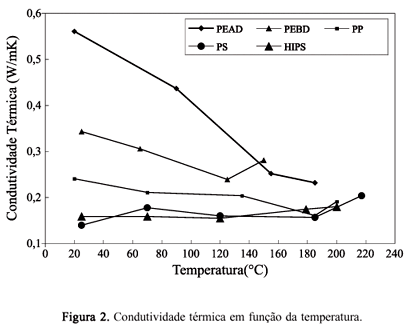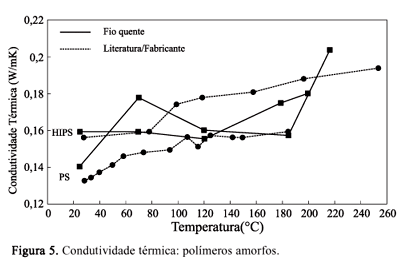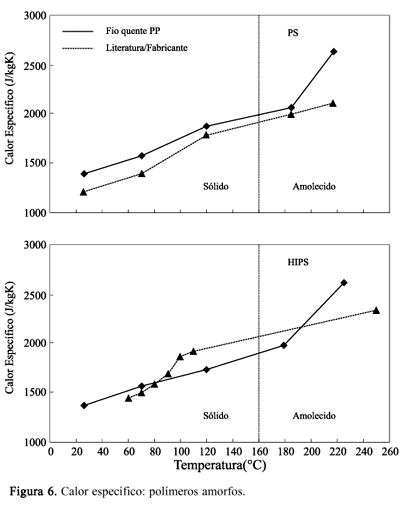The nature of the molecular structure of the plastics makes the properties of such materials markedly temperature dependent. Thermal conductivity, thermal diffusivity and specific heat, namely the thermal properties, are the three most important physical properties of a material that are needed for heat transfer calculations. Reliable thermal properties values are essential for polymers, both in steady and non-steady state situations. Nowadays, several different techniques for the determination of the thermal diffusivity and thermal conductivity may be found in the literature. In this work, the hot wire parallel technique is employed in the experimental determination of the thermal properties of polymers. Three semi-crystalline polymers (HDPE, LDPE and PP), and two amorphous polymers (PS and HIPS) were selected for this work. Samples are prepared through the extrusion process starting from the powder or pellets of the solid polymer. A special mould of stainless steel in the shape of a rectangular parallelepiped provided with ceramic insulators between the hot wire, thermocouple and the mould is employed to store the melt extruded polymer whose thermal properties will be measured. Measurements are carried out from room temperature up to approximately 50 ºC above the melting point. Experimental results obtained are checked against data found in literature and those ones furnished by the manufacturers. A critical analysis of this method shows the advantages and disadvantages of this technique when compared with the laser flash technique.
Melt polymer; thermal conductivity; thermal diffusivity; specific heat; thermal properties; hot wire technique












